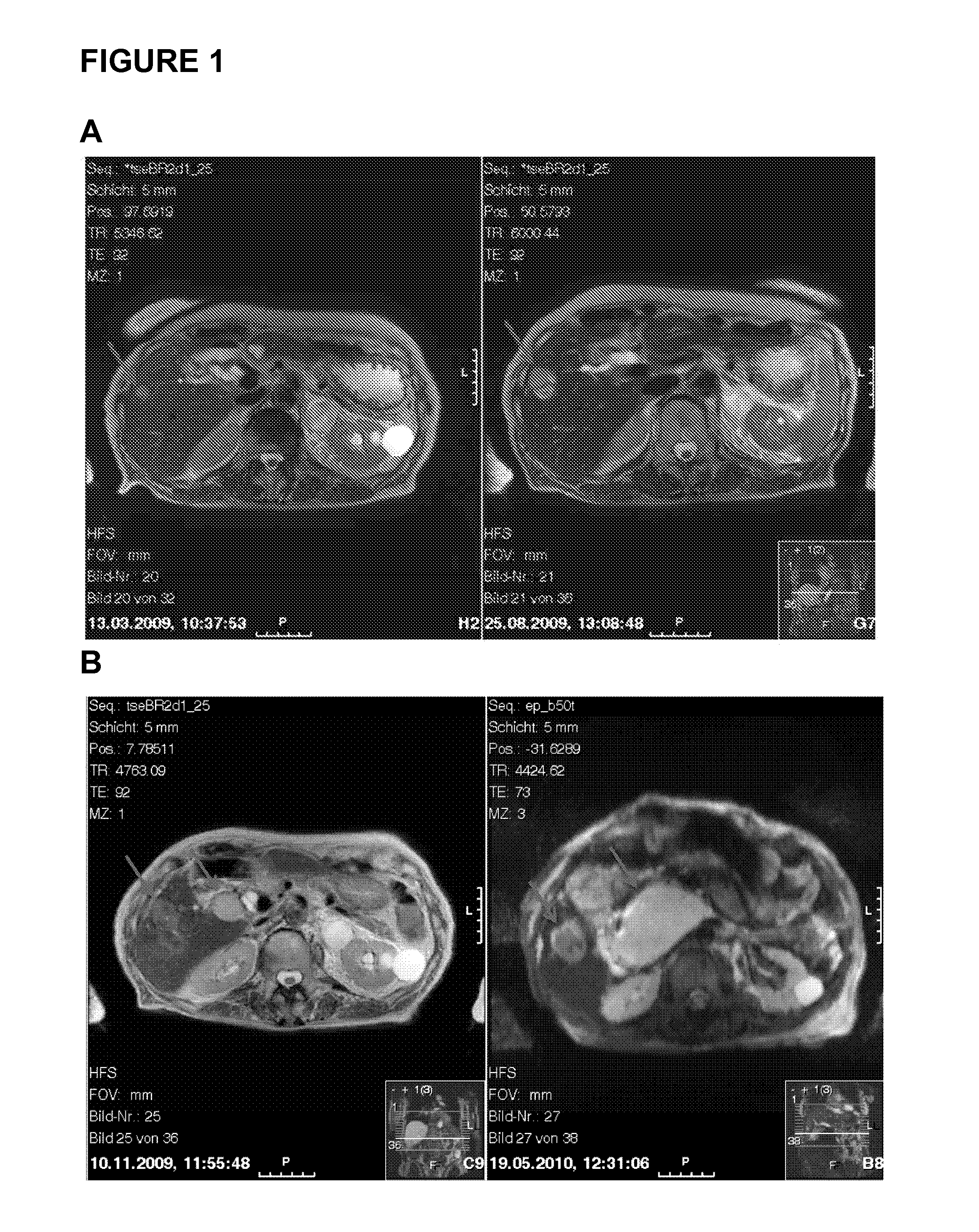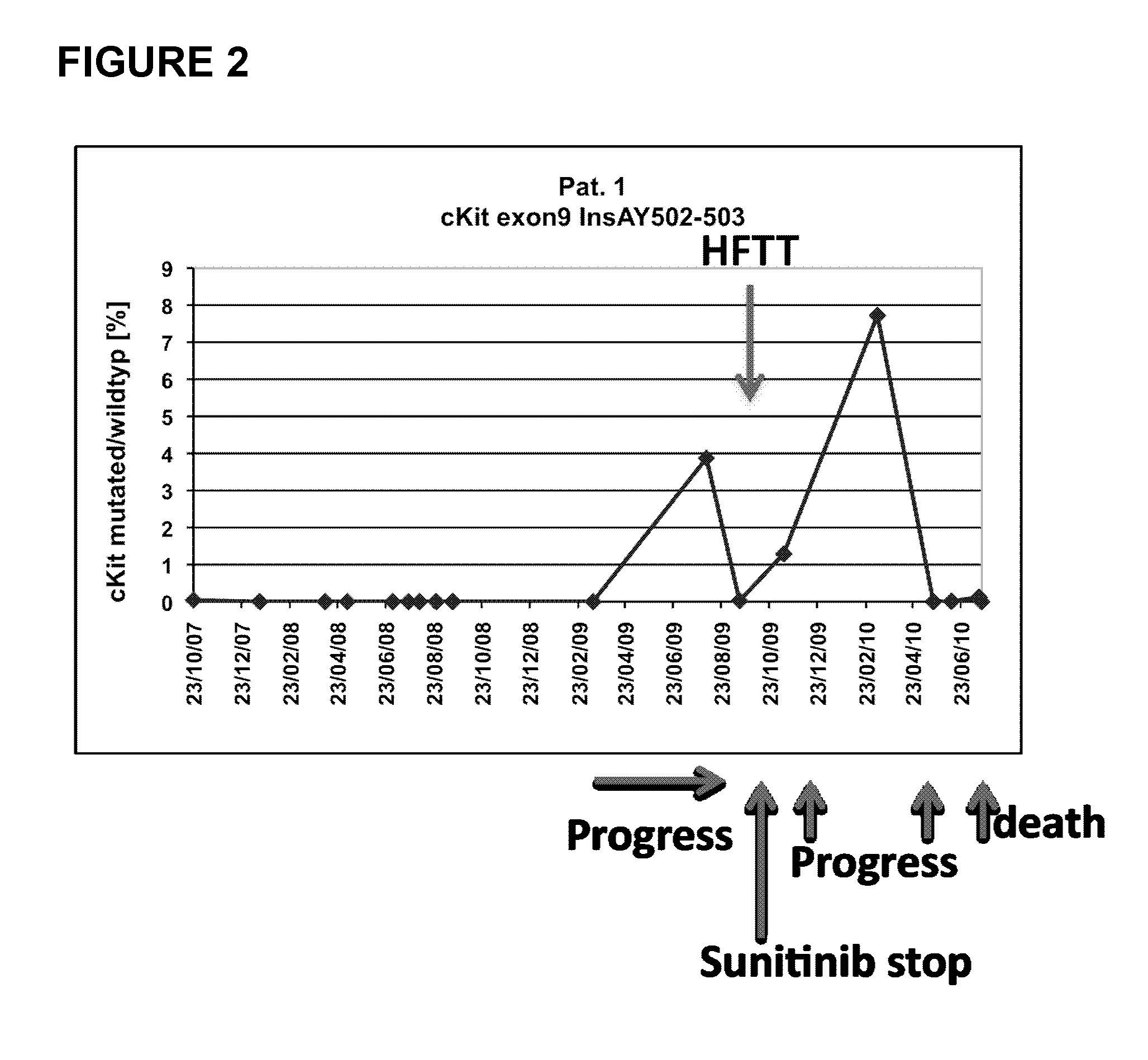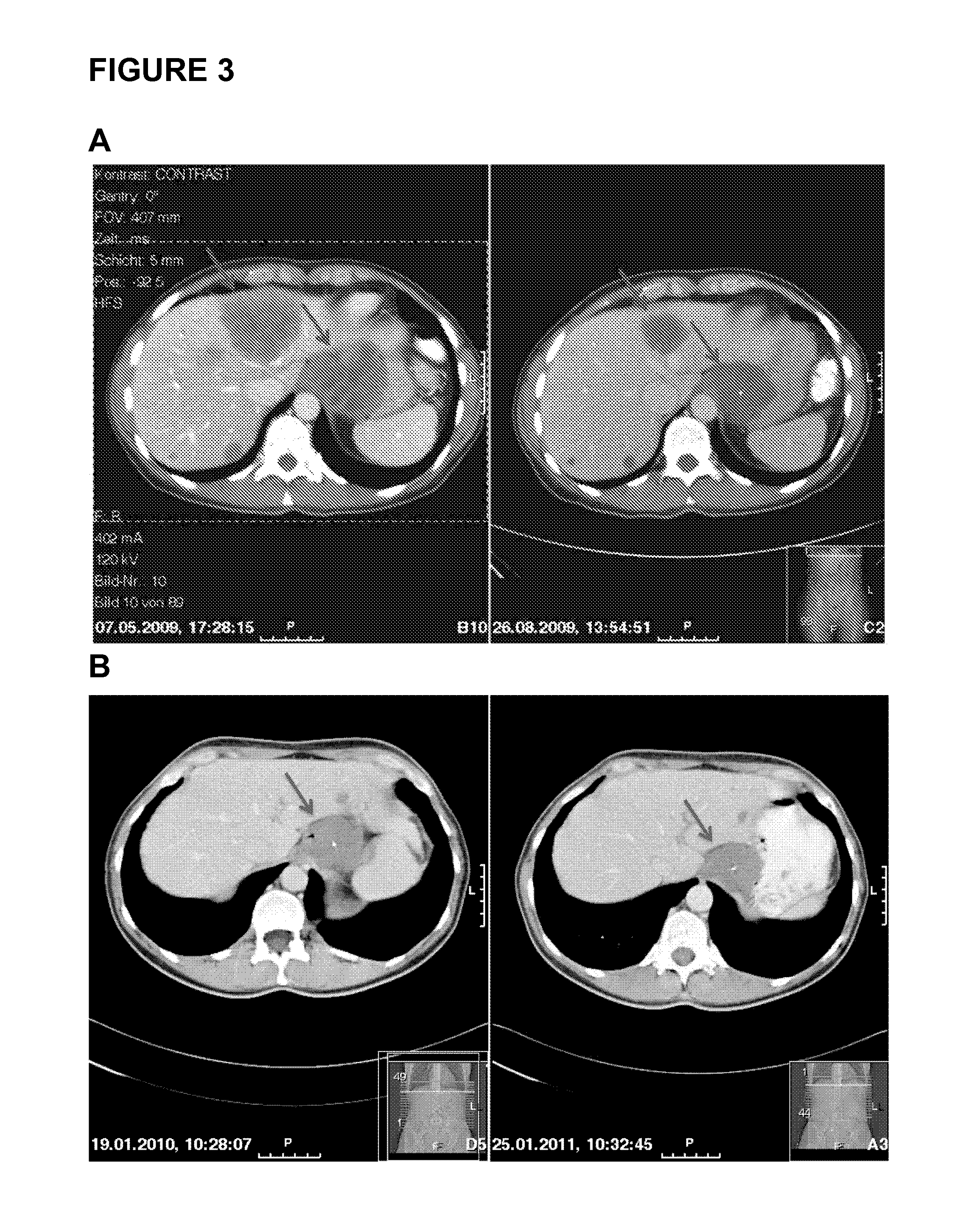Methods and compositions for diagnosing gastrointestinal stromal tumors
a stromal tumor and composition technology, applied in the direction of microbiological testing/measurement, biochemistry apparatus and processes, etc., can solve the problems of limited specificity and sensitivity of this method, uncurable treatment with imatinib, and inability to reliably detect all
- Summary
- Abstract
- Description
- Claims
- Application Information
AI Technical Summary
Benefits of technology
Problems solved by technology
Method used
Image
Examples
example 1
Ligation-PCR
[0151]The detection of tumor-specific mutant DNA fragments in plasma samples requires experimental methods having both high sensitivity and specificity for the tumor-specific DNA as the latter fraction sometimes represents less than 0.01% of the total DNA. Within the present invention, ligation-PCR was employed in this respect as an exemplary method.
1.1 Design of the Oligonucleotides
[0152]Because free plasma DNA results from fragmentation of genomic DNA intron-exon sequences of the target gene (to be amplified) are used to design the respective oligonucleotides. The ligation PCR technique requires two probe pairs per assay. The first pair is complementary to the wild type sequence and the second pair spans the mutated region. Primers and nested primers for both wild type and mutated allele are flanking the probes. The melting temperature of the probes should be adjusted to 65° C. (+1-2° C.) in order to have similar melting temperatures for hybridization and ligation reac...
example 2
Results
2.1 Analysis of Patient 1
[0167]Patient 1 is a 76 years old female having a GIST with hepatic metastases. Patient 1 is treated with sunitinib. FIG. 1 shows exemplary magnetic resonance (MR) images monitoring GIST tumor activity. The images in FIG. 1(A) were taken in March 2009 (left) and August 2009 (right) and demonstrate progressive metastases in the liver during therapy (indicated by the arrows; about a 150% increase in size). In September 2009, the metastases were treated by high-frequency thermo-therapy (HFTT). In October 2009, sunitinib therapy was stopped due to a stroke of patient 1 (data not shown). The MR images in FIG. 1(B) were taken in November 2009 (i.e. after HTFF, left) and May 2010 (right). The metastases in the liver were found to be stable in size (only about 5% increase; first arrow, left and right) but after HFTT a new tumor manifestation became visible that increased in size (second arrow; left and right).
[0168]A duplication of the nucleotide sequence GCC...
PUM
| Property | Measurement | Unit |
|---|---|---|
| melting temperature | aaaaa | aaaaa |
| temperature | aaaaa | aaaaa |
| temperatures | aaaaa | aaaaa |
Abstract
Description
Claims
Application Information
 Login to View More
Login to View More - R&D
- Intellectual Property
- Life Sciences
- Materials
- Tech Scout
- Unparalleled Data Quality
- Higher Quality Content
- 60% Fewer Hallucinations
Browse by: Latest US Patents, China's latest patents, Technical Efficacy Thesaurus, Application Domain, Technology Topic, Popular Technical Reports.
© 2025 PatSnap. All rights reserved.Legal|Privacy policy|Modern Slavery Act Transparency Statement|Sitemap|About US| Contact US: help@patsnap.com



